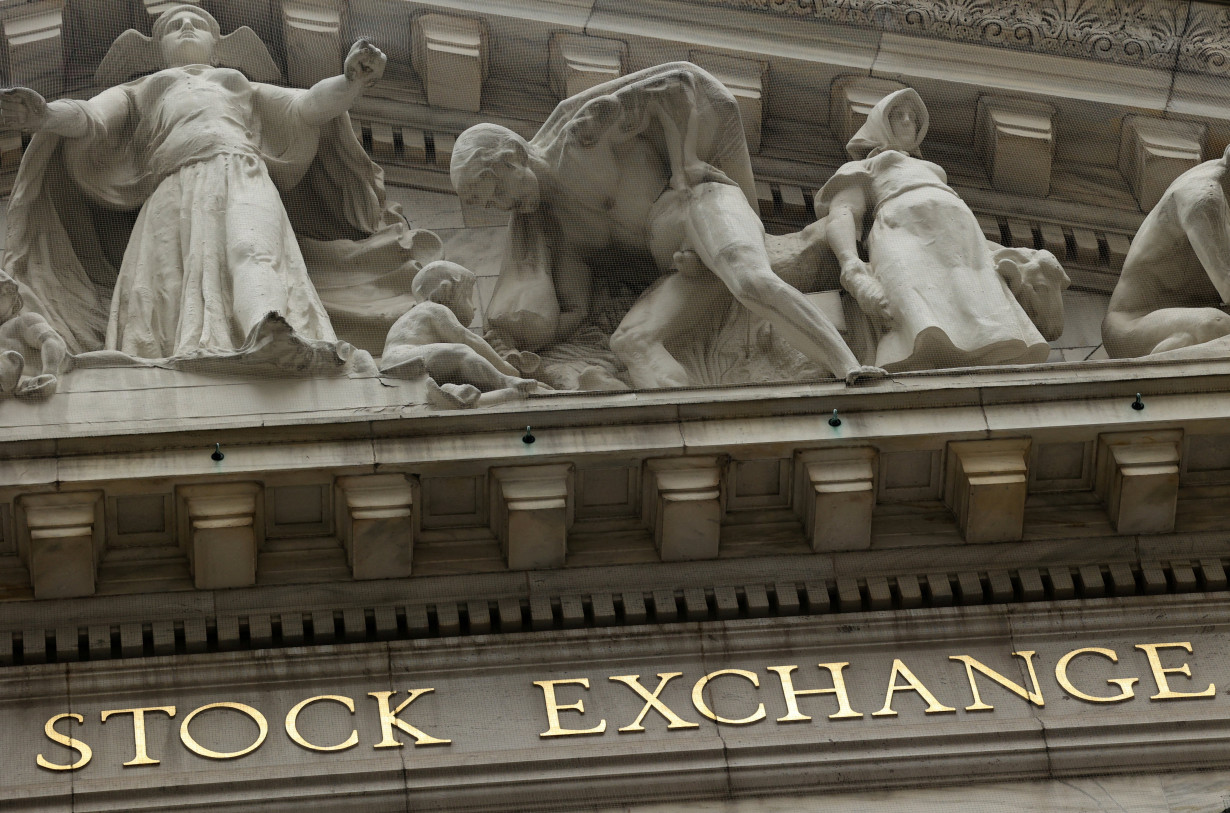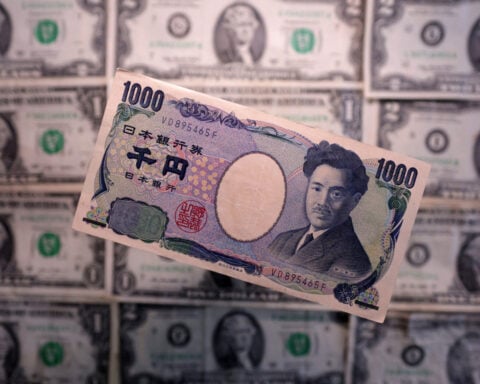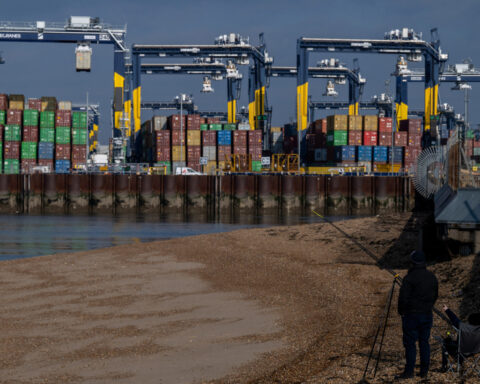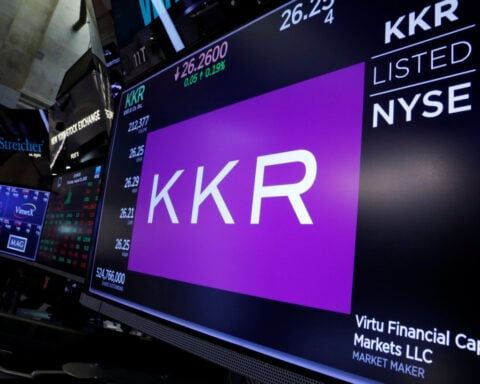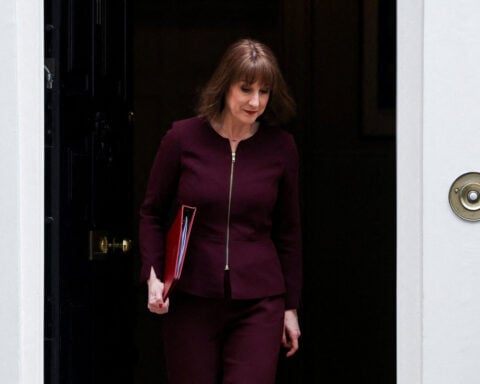By Jamie McGeever
ORLANDO, Florida (Reuters) - "Bouncebackability."
This Britishism is usually associated with cliche-prone soccer managers trumpeting their teams' ability to respond to defeat. It's unlikely to find its way across the pond into the Wall Street crowd's lexicon, but it perfectly sums up the U.S. stock market's resilience to all the setbacks, shocks and everything else that's been thrown at it recently.
And there have been a lot: U.S. President Donald Trump's tariff flip-flops, stretched valuations, extreme concentration in Big Tech and the DeepSeek-led turmoil that recently cast doubt on America's "exceptionalism" in the global AI arms race.
Any one of those issues still has the potential to snowball, causing an avalanche of selling that could push U.S. equities into a correction or even bear-market territory.
But Wall Street has become remarkably resilient since the 2022 rout, especially in the last six months.
Just look at the artificial intelligence-fueled turmoil on Jan. 27, spurred by Chinese startup DeepSeek's revelation that it had developed a large language model that could achieve similar or better results than U.S.-developed LLMs at a fraction of the cost. By many measures, the market move was seismic.
Nvidia shares fell 17%, slicing nearly $600 billion off the firm's market cap, the biggest one-day loss for any company ever. The value of the wider U.S. stock market fell by around $1 trillion.
Drilling deeper, analysts at JPMorgan found that the rout in "long momentum" - essentially buying stocks that have been performing well recently, such as tech and AI shares - was a near "seven sigma" move, or seven times the standard deviation. It was the third-largest fall in 40 years for this trading strategy.
But this epic move didn't crash the market. Rotation into other sectors accelerated, and around 70% of S&P 500-listed stocks ended the day higher, meaning the broader index fell only 1.45%. And buyers of tech stocks soon returned.
U.S. equity funds attracted nearly $24 billion of inflows last week, technology fund inflows hit a 16-week high, and momentum funds attracted positive flows for a fifth-consecutive week, according to EPFR, the fund flows tracking firm.
"Investors saw the DeepSeek-triggered selloff as an opportunity rather than an off-ramp," EPFR director of research Cameron Brandt wrote on Monday. "Fund flows ... suggest that many of those investors kept faith with their previous assumptions about AI."
PANIC MODE?
Remember "yenmageddon," the yen carry trade volatility of last August? The yen's sudden bounce from a 33-year low against the dollar sparked fears that investors would be forced to sell assets in other markets and countries to cover losses in their huge yen-funded carry trades.
The yen's rally was extreme, on par with past financial crises, and the Nikkei's 12% fall on Aug. 5 was the biggest one-day drop since October 1987 and the second-largest on record.
The panic, if it can be called that, spread. The S&P 500 lost 8% in two days. But it vanished quickly. The S&P 500 recouped its losses within two weeks, and the Nikkei did likewise within a month.
So Wall Street has passed two big tests in the last six months, a period that included the U.S. presidential election and Trump's return to the White House.
What explains the resilience? There's no one obvious answer. Investors are broadly bullish about Trump's economic agenda, the Fed still seems to be in easing mode (for now), the AI frenzy and U.S. exceptionalism narratives are still in play, and liquidity is plentiful.
Perhaps one key driver is a well-worn one: the Fed put. Investors – many of whom have spent a good chunk of their working lives in the era of extraordinarily loose monetary policy – may still feel that, if it really comes down to it, the Fed will have their backs.
There will be more pullbacks, and risks of a more prolonged downturn do seem to be growing. But for now, the rebounds keep coming. That's bouncebackability.
(The opinions expressed here are those of the author, a columnist for Reuters.)
(By Jamie McGeever; Editing by Rod Nickel)

 Trump has begun another trade war. Here's a timeline of how we got here
Trump has begun another trade war. Here's a timeline of how we got here
 Canada's leader laments lost friendship with US in town that sheltered stranded Americans after 9/11
Canada's leader laments lost friendship with US in town that sheltered stranded Americans after 9/11
 Chinese EV giant BYD's fourth-quarter profit leaps 73%
Chinese EV giant BYD's fourth-quarter profit leaps 73%
 You're an American in another land? Prepare to talk about the why and how of Trump 2.0
You're an American in another land? Prepare to talk about the why and how of Trump 2.0
 Chalk talk: Star power, top teams and No. 5 seeds headline the women's March Madness Sweet 16
Chalk talk: Star power, top teams and No. 5 seeds headline the women's March Madness Sweet 16
 Purdue returns to Sweet 16 with 76-62 win over McNeese in March Madness
Purdue returns to Sweet 16 with 76-62 win over McNeese in March Madness
